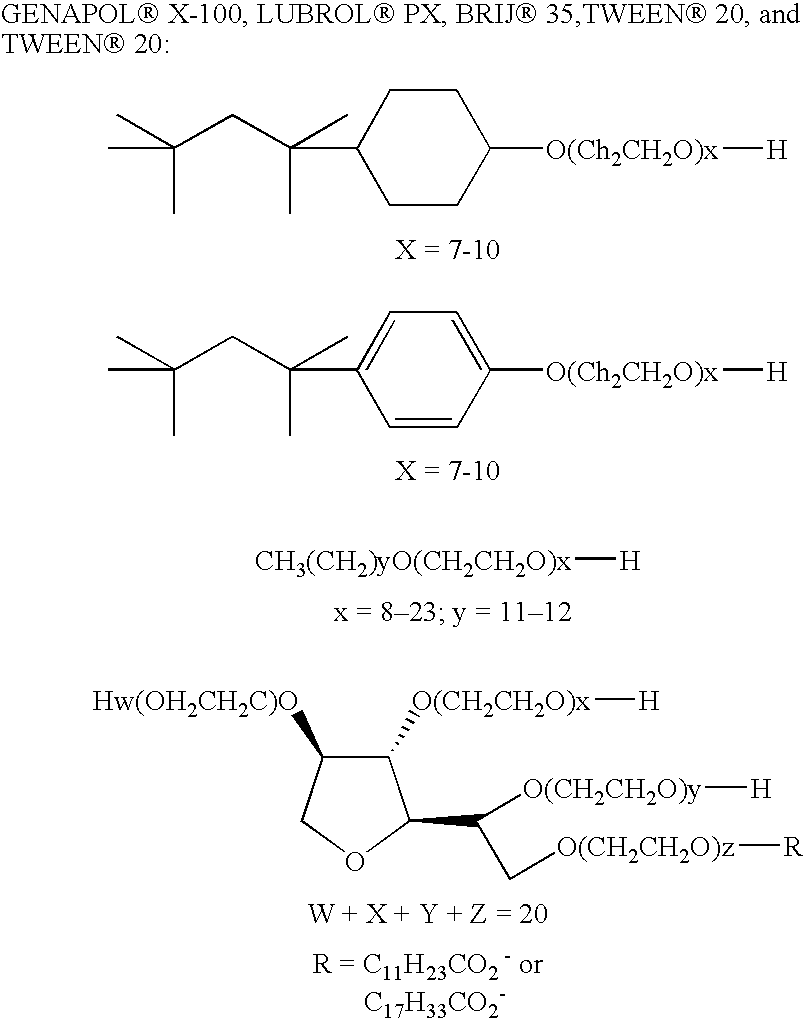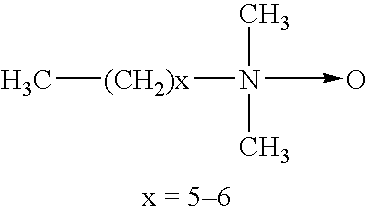Thermostable DNA polymerases and methods of making same
a dna polymerase and thermostable technology, applied in the field can solve the problems of affecting the activity of thermostable dna polymerases, affecting the purification of resulting species, and difficulty in completely removing detergents from the resulting purified species, etc., to achieve the effect of increasing the activity of a dna polymeras
- Summary
- Abstract
- Description
- Claims
- Application Information
AI Technical Summary
Benefits of technology
Problems solved by technology
Method used
Image
Examples
example 1
Purification of DNA Polymerase
[0049] This example describes a process to purify thermophilic DNA polymerase from a frozen bacterial cell paste.
[0050] Reagent and Buffer Preparation
[0051] Lysis buffer was prepared by mixing Tris HCl (pH 8.5), EDTA and ammonium sulfate. The final concentration for Tris HCl, EDTA and ammonium sulfate in the buffer solution was 50 mM, 2 mM, and 1 M, respectively. The pH of this buffer solution was adjusted to 8.5±0.1 at room temperature. The buffer was stored at 4° C. for up to one week, and was filtered before use.
[0052] 100 mMPMSF: 1 g PMSF was added to 60 ml of isopropanol in an appropriate container, vortexed to mix thoroughly (this material does not go into solution very easily). The solution was stored at 4° C. for one month. Heat gently (<50° C.) to re-dissolve any material that crystallizes out during storage prior to use.
[0053] Buffer A was prepared by mixing Tris HCl (pH 8.5), EDTA, ammonium sulfate, and DTT. The final concentration for T...
example 2
Enzyme Activity Assays
[0070] DNA polymerase activity was measured by running reactions of 50 μL containing 25 mM TAPS (tris-hydroxymethyl-methylaminopropane sulfonic acid) buffer, pH 9.3 (measured at 25° C.), 50 mM KCl, 2 mM MgCl2, 1 mM 2-mercaptoethanol, 0.2 mM each of dGTP, dCTP, dTTP, 0.2 mM [α-33P]-dATP (0.05-0.1 Ci / mmol) and 0.4 mg / mL activated salmon sperm DNA. The reaction mixture (45 μL) was pre-heated to 74° C. and diluted polymerase (5 μL) added with thorough mixing. After 10 minutes of further incubation at 74° C., the reaction was stopped by the addition of 10 μL of 60 mM EDTA and the entire mixture placed at 0° C. Acid-precipitable radioactivity was determined on an aliquot (50 mL) by diluting with 1 ml of 2 mM EDTA containing 0.05 mg / ml salmon sperm DNA and adding 1 mL of 20% (w / v) trichloroacetic acid, 2% (w / v) sodium pyrophosphate (Na4P2O7·10H2O) and incubating on ice for at least 15 minutes. Precipitated DNA was collected by filtering through 2.4 cm GFC filter disk...
PUM
| Property | Measurement | Unit |
|---|---|---|
| Volume | aaaaa | aaaaa |
| Volume | aaaaa | aaaaa |
| Volume | aaaaa | aaaaa |
Abstract
Description
Claims
Application Information
 Login to View More
Login to View More - R&D
- Intellectual Property
- Life Sciences
- Materials
- Tech Scout
- Unparalleled Data Quality
- Higher Quality Content
- 60% Fewer Hallucinations
Browse by: Latest US Patents, China's latest patents, Technical Efficacy Thesaurus, Application Domain, Technology Topic, Popular Technical Reports.
© 2025 PatSnap. All rights reserved.Legal|Privacy policy|Modern Slavery Act Transparency Statement|Sitemap|About US| Contact US: help@patsnap.com


